Squid
Squid are marine cephalopods of the order Teuthida, which comprises around 300 species. Like all other cephalopods, squid have a distinct head, bilateral symmetry, a mantle, and arms. Squid, like cuttlefish, have eight arms arranged in pairs and two longer tentacles. (The only known exception is the bigfin squid group, which have ten very long, thin arms of equal length.) Millions of years ago, prehistoric sea creatures swam Earth’s waters. Remains of these animals have been found near Australia, Germany, and in the Western Interior Seaway, a vast sea that once bisected North America.
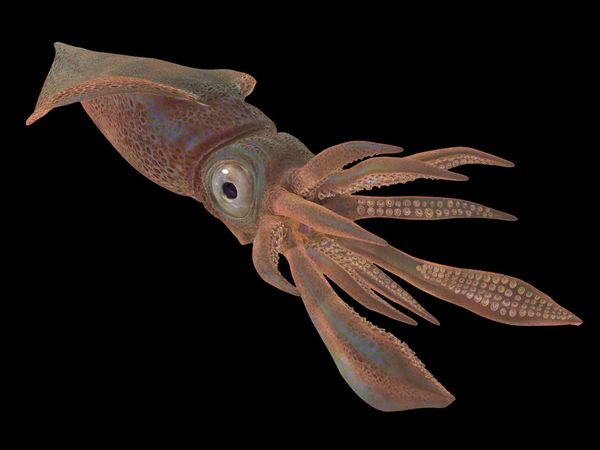
Lets take a look at 12 most amazing sea monsters. Feel free to drop comments if you like these amazing pictures.
Bacculite
Also called a straight ammonite, Bacculite is an ammonite mollusk with a straight, not spiraled, shell.


Caproberyx
Caproberyx is an extinct genus of bony fish from the Cretaceous period of Africa and Europe. It has also been found in Kansas, USA.
Enchodus
Enchodus is an extinct genus of bony fish. It flourished during the Upper Cretaceous and was small to medium in size. One of the genus’ most notable attributes are the large “fangs” at the front of the upper and lower jaws and on the palatine bones, leading to its misleading nickname among fossil hunters and paleoichthyologists, “the saber-toothed herring”. These fangs, along with a long sleek body and large eyes, suggest Enchodus was a predatory species. In North America, Enchodus remains have been recovered from most states with fossiliferous Late Cretaceous rocks, including Kansas, Nebraska, Colorado, Alabama, Mississippi, Georgia, Tennessee, Wyoming, Texas, California, and New Jersey. The taxon is also known from coeval strata in Africa, Europe, and southwest Asia.
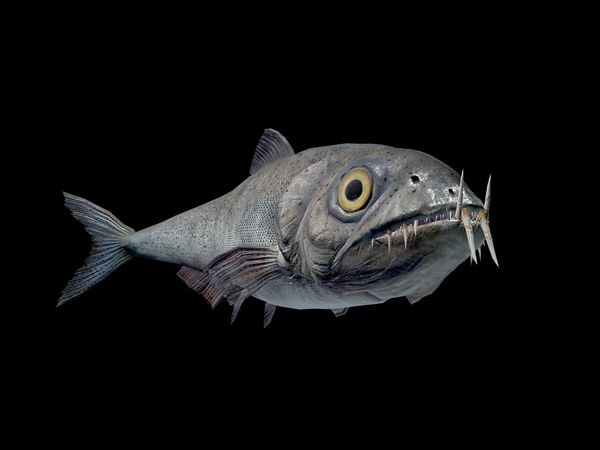
Bananogmius
Bananogmius is an extinct genus of bony fish that lived in what is today Kansas during the Late Cretaceous. It lived in the Western Interior Seaway, which split North America in two during the Late Cretaceous. Bananogmius was equipped with flat jaws and palatine plates that helped it crush its favorite prey, clams and mollusks.

Temnodontosaurus
With eyes 10 inches (25.4 centimeters) wide, Temnodontosaurus could see in near lightless conditions and probably dove for food. Temnodontosaurus was an ichthyosaur from the Early Jurassic, some 198 and 185 million years ago (Hettangian – Toarcian), in Europe (England & Germany). It was a large genus, exceeded 12 meters (30 ft) in length.
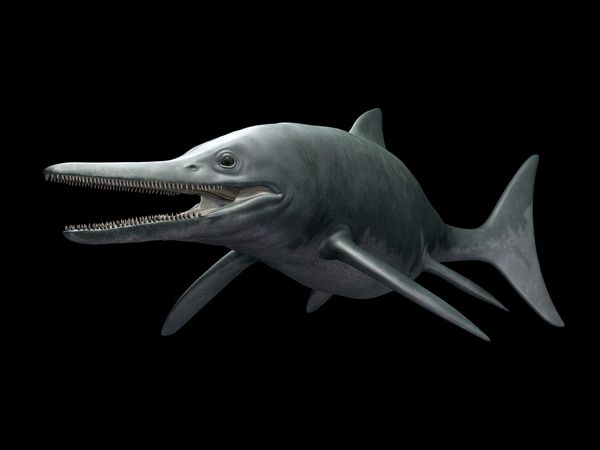
Styxosaurus
Styxosaurus was a long-necked marine reptile that grew upwards of 40 feet (12 meters) long. About half of that length was neck. Styxosaurus is a genus of plesiosaur of the family Elasmosauridae. Styxosaurus lived during the Santonian and Campanian age of the Cretaceous period.
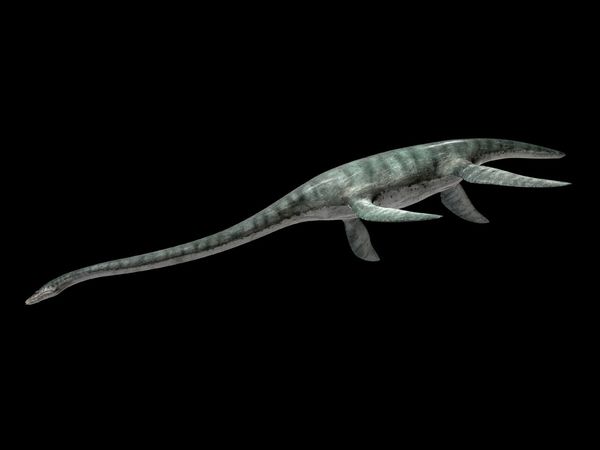
Squalicorax
Squalicorax is a genus of extinct lamniform shark known to have lived during the Cretaceous period. A fully articulated (fully-formed) 1.9 m long fossil skeleton of Squalicorax (S. falcatus) has been found in Kansas, evidence of its presence in the Western Interior Seaway. Large numbers of fossil teeth have been found in Europe, North Africa, and other parts of North America. From the size of its largest known teeth, it can be estimated that Squalicorax pristodontus grew to 5 m (16.5 ft) in length. Squalicorax was a predator, but also scavenged as evidenced by a Squalicorax tooth found embedded in the metatarsal (foot) bone of a terrestrial hadrosaurid dinosaur that most likely died on land and ended up in the water. Other food sources included turtles, mosasaurs, ichthyodectes and other bony fishes and sea creatures.

Protostega
Protostega gigas is an extinct species of marine turtle. It was first collected from the Smoky Hill Chalk of western Kansas in 1871, and named by E.D. Cope (1872). With a length of 3 m (10 ft), it is the second-largest turtle that ever lived, second only to the giant Archelon. Like the modern leatherback sea turtle, the largest living turtle at 2,70 m (9 ft) long, Protostega’s carapace lacked scutes, making it weaker but also lighter. Protostega probably fed on slow ocean creatures such as jellyfish and shellfish.
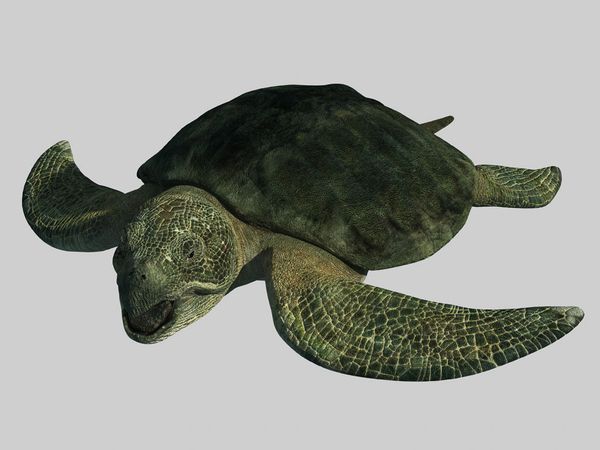
Nothosaur
Nothosaur were Triassic marine sauropterygian reptiles that may have lived like seals of today, catching food in water but coming ashore on rocks and beaches. They averaged about 3 metres (10 ft) in length, with a long body and tail. The feet were paddle-like, and are known to have been webbed in life, to help power the animal when swimming. The nothosaurs consist of two suborders—the Pachypleurosaurs, tiny, primitive forms, and the true Nothosaurs, which evolved from pachypleurosaurs. Nothosaur-like reptiles were in turn ancestral to the more completely marine plesiosaurs, which replaced them at the end of the Triassic period. With its leathery skin, long tail, short legs, and needle-like teeth, the Nothosaur resembled a prehistoric crocodile.

Kronosaurus
Kronosaurus is an extinct genus of short-necked pliosaur. It was among the largest pliosaurs, and is appropriately named after the leader of the Greek Titans, Kronos. Kronosaurus four paddle-like flippers helped the Kronosaurus move underwater much like sea turtles.

12. Gillicus
Gillicus arcuatus was a relatively small, 2-meter long ichthyodectid fish that lived in the Western Interior Seaway, in what is now central North America, during the Late Cretaceous. Like its larger relative, Ichthyodectes ctenodon, G. arcuatus had numerous small teeth lining its jaws, and ate smaller fish by sucking them into its mouth. Gillicus also fillter feeded and were also eaten by their own relitive, xiphactinus.
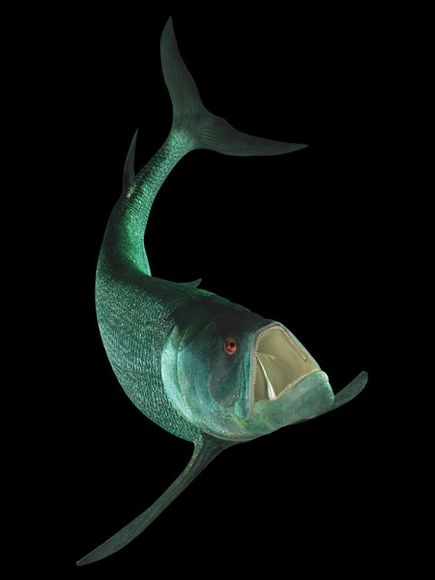


0 comments:
Post a Comment